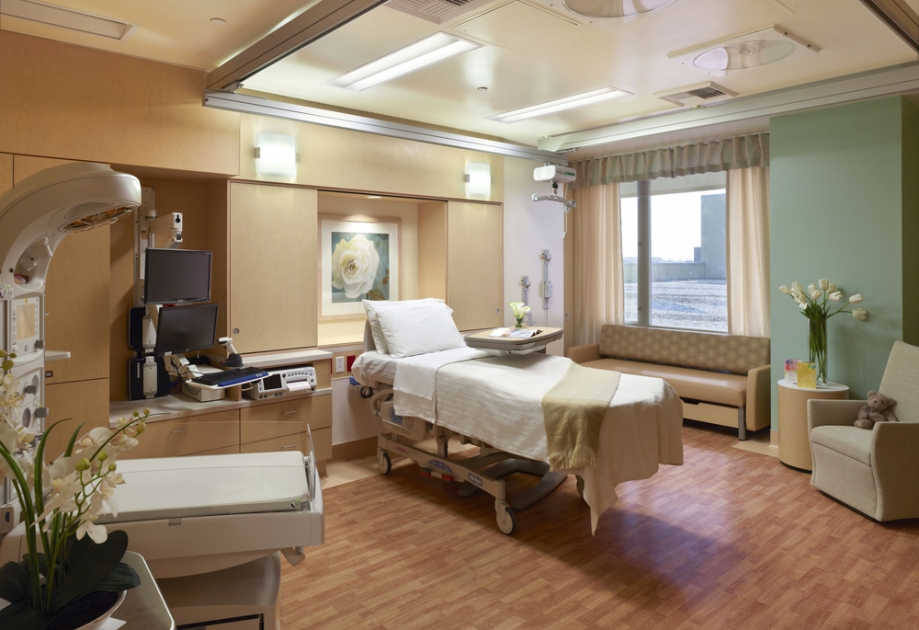
WHAT IS DESIGN BUILD? A REVOLUTIONARY APPROACH TO MODERN HEALTH-CARE CONSTRUCTION.
The best ideas are born through collaboration, and when different ideas and skills come together to work towards a single purpose, the results are almost always spectacular.
Despite the changing landscapes of economic and financial conditions, the need for quality healthcare remains. Hospital owners and developers are striving to keep up with this demand in a productive and efficient manner, leading them towards the design-build delivery method of construction: a cost-effective, time-saving and efficient approach to building hospitals and healthcare facilities.
What is Design-Build?
The Design-Build approach is a construction delivery method, in which one entity provides the owners with a single point of contact for both the design and the construction phases of a project. This entity, or company, holds all of the responsibility for each and every aspect of design and build – from estimation, assessment and pre-construction to architecture, engineering and subcontracting, and manages all the contracts with subcontractors, equipment vendors and materials providers etc.
The Design-Build approach brings all the elements and skills required for a project together, which reduces the risk of unforeseen costs and delays, and helps create a sound design, a defined budget and a streamlined schedule.
Why is Design-Build Important?
According to industry reports, the Design-Build approach is 33% faster, 6% more cost-efficient, and 8% more time-saving. Essentially, it provides:
- Rapid Delivery
- Smooth Process
- Better Value
- Better Solutions
- Better Cost
The Design-Build Process
The phases involved in a Design-Build approach often overlap, since the team members need to collaborate throughout the process to provide rapid delivery. Design-Builders can help hospital and healthcare facility owners optimize their design & build plans by working carefully through each of the phases and delivering greater end results than possible with any other method.
- Selecting a Design-Builder
Instead of selecting architects and engineers, you start a Design-Build process by selecting a Design-Builder: an entity that both designs and constructs your facility.
It is recommended to use a qualification-based selection process, instead of a low-bid process, because limiting budget evaluations and price estimates as early as in the start of the project can lead to lower value in the delivery.
- Pre-construction and Building Value-Engineering into Design
This crucial phase involves identifying and learning about your business, goals and financial realities, which sets the course for the successful completion of the project.
A Design-Build project team will partner with you to use this information in order to achieve your goals within your time and budget constraints.
- Architectural Design
Design-Builders can either directly employ architects, or subcontract to trusted architectural design partners. In the Design-Build approach, architects work together with engineers, vendors and other professionals to create a design that efficiently fulfills all needs.
- Construction
In the Design-Build approach, the construction and design phases work side-by-side, which means that your project will be completed more quickly.
The Design-Build project team will often start readying your job site as design progresses, and begin construction during the design phase, delivering a timely build optimized for all your needs.
- Post-construction
Once the construction of your facility has been successfully completed, the Design-Builder will provide post-construction walk-throughs, instructional videos, hands-on training and core documentation for owners, managers and teams.
Where is Healthcare Construction Today?
Healthcare design and construction has evolved over the years with technological developments, medical breakthroughs and regulatory environments. Today, healthcare providers are switching from a volume-based model to a more value-based one, which requires healthcare design & build to support population health management and patient outcomes.
Healthcare facilities are no longer aiming for maximum occupancy and acuity. Small and medium-sized clinics are being strategically placed and constructed to help patients move towards healthier lifestyles, and stay out of hospitals.


























